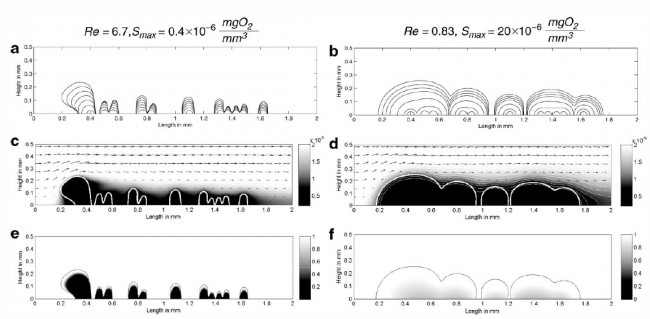Biofilm growth in fluid media
A continuum model for the biofilm growth in a generalized non-dimensional form is developed, based on the 1D kinetic model proposed by (Chopp et al. 2002). The model considers fluid flow around the biofilm surface, the advection–diffusion and reaction of substrate, variable biomass, volume fraction and erosion due to the interfacial shear stress at the biofilm–fluid interface. A combined extended finite element and level set method is used to simulate biofilm growth. The model gives quantitative results for the given kinetic model and is useful for understanding the biofilm growth behavior and biofilm architecture. This work illustrates that detachment criteria which are based on the shape of the biofilm structure only (i.e. based on biofilm height) that do not take local flow effects into account are not appropriate. The model suggests that erosion loss at the biofilm-fluid interface is more significant than detachment events involving the tearing of the entire biofilm near the substratum.

Simulated biofilm growth. a: Biofilm interface at t = 0, 20, 40, 60, 80, 100, 120 days. b: Biofilm interface at t = 0, 1.0, 2.0, 3.0, 3.5, 4.0, 4.5 days. c: Fluid flow velocity field and substrate concentration in the flow cell at t = 120 days. d: Fluid flow velocity field and substrate concentration in the flow cell at t = 4.5 days. e: Biomass fraction at t = 120 days. f: Biomass fraction at t = 4.5 days.
©2025 Vanderbilt University ·
Site Development: University Web Communications